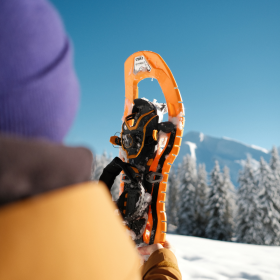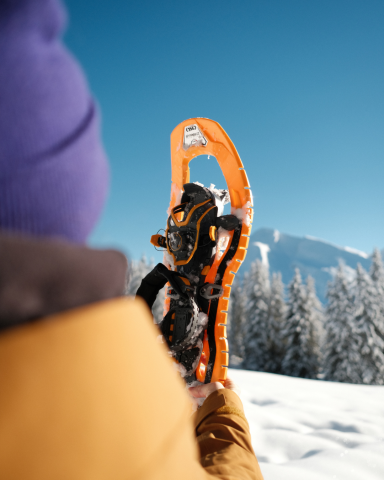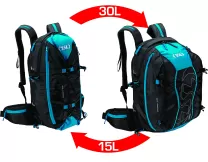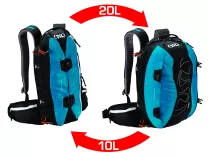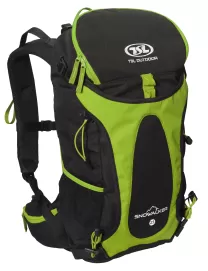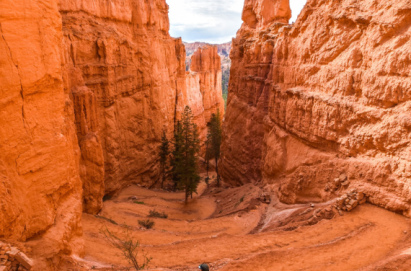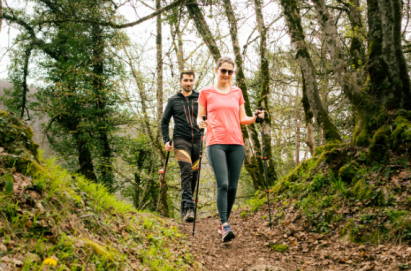BACKPACKING PACKS FOR OVERNIGHT
Choosing the Right Backpacking Pack: Comfort, Performance, and Versatility
The backpacking pack is more than just a simple container for your gear—it is your companion on rugged trails, your support during alpine climbs, and your lifeline during long treks. Finding the perfect balance between comfort, functionality, and capacity is key when selecting the right pack. Whether you’re embarking on a short day hike or a multi-day adventure, the backpack you choose will make or break your experience. Here’s a detailed guide to help you navigate the complex world of backpacking packs.
Understanding the Different Types of Backpacking Packs
There are various types of backpacking packs, each designed for specific activities and trip lengths. Knowing which pack suits your needs is the first step to ensuring you have the right gear for your adventure.
-
Daypacks: As the name suggests, these are ideal for short day hikes or trips where you don’t need to carry much. They are typically lightweight and smaller in size, providing just enough space for essential items such as food, water, and perhaps a sleeping layer.
-
Overnight Packs: These are designed for trips lasting one to three nights. With additional storage and compartments, you can comfortably pack your sleeping bag, clothes, food, and basic gear.
-
Extended Trip Packs: If you’re heading out for a longer trek or a multi-day mountain expedition, you’ll need a pack with greater capacity. These backpacks often feature larger sleeping bag compartments, extra padding, and adjustable torsos to ensure comfort over extended periods.
Capacity: How Much Space Do You Really Need?
When considering a backpacking pack, one of the first things you should think about is its capacity. The size of the pack you choose depends on the length of your trip and how much gear you plan to carry.
-
Day hikes typically require packs in the 20-30 liter range. These packs are compact but offer enough space for essentials like snacks, water, and an extra layer of clothing.
-
Weekend trips usually call for a 40-60 liter pack. This provides enough room to store your sleeping bag, clothes, and lightweight cooking gear, while still being manageable and not too bulky.
-
Extended treks or multi-week adventures demand packs in the 60-80 liter range. These larger packs allow you to carry more food, a bigger sleeping bag, and additional layers of clothing, especially if you’re venturing into alpine or cold environments.
Always remember that bigger isn’t always better. Carrying a backpack that is too large can throw off your balance and make hiking more difficult. Be mindful of your gear needs and opt for a comfortable pack that provides just the right amount of space.
Comfort Features: Finding the Right Fit
When it comes to backpacking packs, comfort is crucial. You’ll likely be wearing your pack for long hours, so ensuring it fits well is essential to avoiding discomfort and injury.
-
Adjustable torso length: Many backpacking packs feature an adjustable torso, allowing you to fine-tune the pack to match your body’s proportions. A well-adjusted pack will distribute weight evenly across your shoulders and hips, preventing strain on your back and allowing for better posture.
-
Shoulder straps: Look for shoulder straps that are well-padded and ergonomically designed to reduce pressure on your shoulders. Packs like the Osprey Atmos AG are renowned for their comfortable suspension system and breathable straps, ensuring a better fit during long hikes.
-
Hip belts: A good backpacking pack should come with a padded hip belt. The hip belt transfers much of the pack’s weight from your shoulders to your hips, making it easier to carry heavier loads for longer periods.
-
Load lifters: These straps, located just above the shoulder straps, help pull the top of the pack closer to your body, improving weight distribution and preventing the pack from pulling you backward.
Weight Distribution and Balance
One of the key challenges in choosing the right backpacking pack is achieving proper balance. A poorly balanced pack can make you feel unstable on rugged terrain and increase the risk of injury. Here’s how to maintain balance with your pack:
-
Keep the heaviest items close to your back: Placing heavy items like water bottles or your sleeping bag too far from your body can throw off your balance. Instead, keep the heaviest gear packed close to the center of your back and as low as possible in the pack.
-
Distribute weight evenly: Try to avoid packing all the heavy items on one side of the pack. Distribute your gear so that the weight is even on both sides, helping you maintain better control and stability.
Essential Compartments and Features
The design of a backpacking pack goes beyond its size and fit. The best packs offer useful compartments and features that make it easier to access your gear and keep it organized on the trail.
-
Sleeping bag compartment: Many backpacking packs come with a dedicated sleeping bag compartment at the bottom of the pack. This allows you to keep your sleeping bag separate from the rest of your gear, making it easier to access when setting up camp.
-
Hydration sleeve: A hydration sleeve, usually located in the main compartment of the pack, is designed to hold a water bladder. This feature is particularly useful for staying hydrated without needing to stop and take off your pack.
-
External pockets: Look for packs with multiple external pockets for storing smaller items like snacks, maps, or your phone. Having quick access to these essentials can save you time and effort on the trail.
-
Compression straps: These straps help compress the load inside your pack, making it more compact and reducing movement of your gear. They also allow you to add or remove extra gear, like a sleeping pad or rock climbing gear, depending on your needs.
Weight: Light or Heavy?
The weight of your backpacking pack itself is a key consideration. The lighter the pack, the less weight you’ll have to carry, but lightweight packs often sacrifice durability or features.
-
Lightweight packs: These are great for minimalist hikers or those planning shorter trips. They prioritize low weight over features, which means fewer compartments and padding. However, for those aiming to move fast and light, this can be an ideal choice.
-
Heavier packs: These backpacks tend to offer more support and features, such as additional padding and sturdy frames, making them suitable for longer treks or carrying heavier loads. They are also more durable, capable of withstanding rugged mountain terrain and rough use.
When deciding between a lightweight or heavier pack, consider the type of trip you’re planning and the gear you’ll be carrying. A lightweight pack might be ideal for a quick overnight trip, while a sturdier, heavier pack will be better suited for long expeditions in challenging environments.
Leading Backpack Brands
When it comes to choosing a backpacking pack, there are several trusted brands known for their high-quality and reliable products.
-
TSL Outdoor: While known primarily for their expertise in mountain gear and snowshoes, TSL Outdoor also provides dependable packs for alpine and rugged terrain, catering to both casual hikers and seasoned adventurers.
Packing Tips for Maximum Efficiency
Once you’ve chosen the right backpacking pack, the way you pack your gear will also have a significant impact on your overall comfort and balance.
-
Use packing cubes or stuff sacks: These are great for keeping your gear organized and compact. You can sort your gear by type or need, making it easier to locate items quickly.
-
Roll your clothes: Rolling your clothes instead of folding them can help save space and reduce wrinkles. It also makes it easier to pack them tightly into your backpack.
-
Keep essentials at the top: Make sure that items you’ll need frequently, such as rain gear, snacks, or maps, are easily accessible at the top of your pack or in external pockets.
Organizing for Accessibility
When you’re on the trail, you don’t want to have to dig through your entire backpack to find what you need. Organizing your pack for accessibility is essential for an efficient hike.
-
Store your rain gear at the top: If there’s a chance of rain, keep your rain jacket and pants at the very top of your pack, or in an outer pocket. This will ensure you can grab them quickly without unpacking everything.
-
Keep your water accessible: If your pack has a hydration sleeve, use it. Otherwise, make sure your water bottles are stored in side pockets where they are easy to reach.
-
Store food and snacks: If you’re hiking for several hours, you’ll want to have snacks easily accessible. Keep them in hip belt pockets or small outer pockets so you can grab them without taking off your pack.
By considering these tips and features, you’ll be able to find the perfect backpacking pack that meets your needs, whether you’re heading out for a quick day hike or an epic multi-week adventure across rugged terrain.
Discover our various activities
Complete your Outfit
Discover our latest news
-
Trekking
-
Trail
